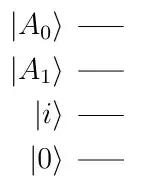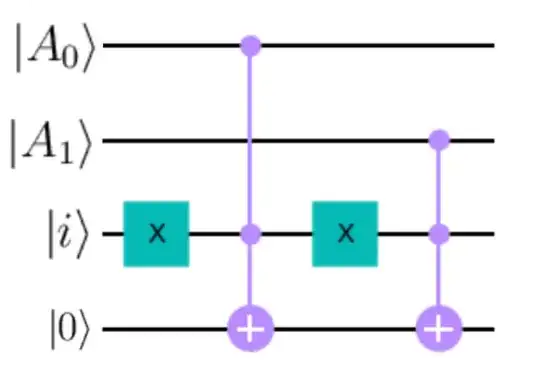Let's assume I have two qubits of state $|A_0\rangle$ and $|A_1\rangle$ correspondingly stored in a quantum memory. How do I find a Unitary $U$ that acts on another register of 2-qubits such that $$U:|i\rangle|0\rangle\rightarrow|i\rangle|A_i\rangle?$$
Is such a unitary even possible or is this forbidden due to the no-cloning theorem? However, I don't want to clone the states $|A_0\rangle$ and $|A_1\rangle$, but rather do some kind of multiplexing with them.
That's what my register looks like:
In the end, I want to turn the $|0\rangle$ qubit into $|A_i\rangle$ depending on the state of the $|i\rangle$ qubit. Is something like this generally possible?

